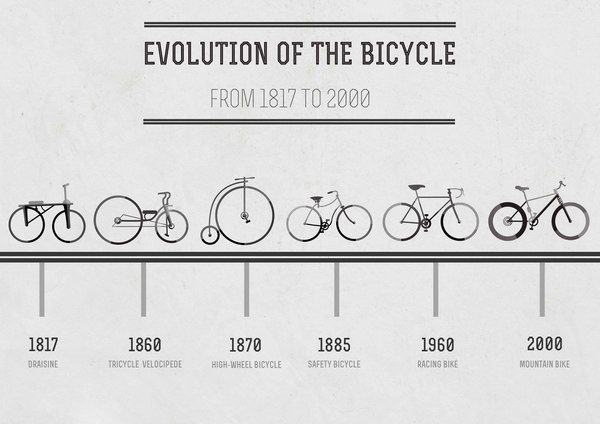Porn Discounts Sex Games Porn Games Juegos XXX Hentai Games PornStar Games 3D Porn Tantaly Sex Doll Cupsland Sextoy Live Cams DeepNude AI
Live Sex Free Live Sex Free Sex Games PŠginas Porno Rose Toy Free OnlyFans Celebrity Fappening Celebrity Sex Videos TikTok Porn Best OnlyFans
Live Sex Free Live Sex Free Sex Games PŠginas Porno Rose Toy Free OnlyFans Celebrity Fappening Celebrity Sex Videos TikTok Porn Best OnlyFans
Published on 2021/05/20
I SAW THAT GOING DIFFERENTLY IN MY MIND VOL17

Tip of the day: In order to truly appreciate victory, you must have tasted defeat before.
|
➡️ Let's do real, be real with Tantaly, the sex doll torso leader |
Ready-to-wear.
ExtraBall2
(Clicking on these links daily you support ALRNCN's work. These are collaborations or sponsorships and, by visiting their sites, they like us even more)







DOING THINGS AS A COUPLE STRENGTHENS THE BOND
Sharing activities as a couple isnít just about spending time together; itís about building connection, breaking routines, improving communication, and creating unique memories. Whether itís cooking a new recipe, exploring something creative, or simply enjoying a walk, every experience adds to the emotional bond and strengthens the relationship. What matters isnít the scale of the activities but the intention to connect and enjoy each other.

# Watch video
ExtraBall
The slow-mo of the day.
ExtraBall2
(Clicking on these links daily you support ALRNCN's work. They're collaborators or sponsors and, by visiting their sites, they like us even more)











WHEN YOU PLAY WITH FIRE
Fire has always been a powerful symbol in our history: light in the darkness, warmth in the cold, but also a constant reminder that beauty can be dangerous. In street performances, the balance between control and chaos is part of the magic.
A perfect move can draw applause, but a small mistakeóa spark out of place, an unexpected twistócan change the show in an instant. Because, in the end, fire doesnít truly let itself be tamed. And thatís its allure: we love it, even knowing it can consume us.

# Watch videos
ExtraBall
Getting that booty in shape.
ExtraBall2
(Clicking on these links daily you support ALRNCN's work. They're collaborators or sponsors and, by visiting their sites, they like us even more)

























RECOMMENDED SITES
 Add your site
Add your site
- Entensity
- Motherless
- BoobieBlog
- sweetlicious
- Babes & Bitches
- drunkenstepfather
- Erotic Beauties
- celeb-stalker.com
- Candid Teens
 Add your site
Add your sitePorn Discount
💩 CrazyShit
🤪 eFukt
NudeChatGirls
👉🍑 Top XXX Pictures
Bingo Porno
Best Porn Blog Sites
Sex Games
Real Amateur Porn
MrPornGeek
CamBB.xxx
ChatSex.xxx
Comepollas
PornScn Free Porno
AI Girlfriend App
Hardcore Porn Videos

















ITíS ME, ME, ME, AND THEN ME AGAIN
Why do so many people feel the need to share everything they do on social media?
For many, the urge to post every aspect of their lives online stems from a desire for validation or approval. The "likes" and comments serve as a kind of positive reinforcement that makes them feel good about themselves. Each interaction acts like a small dose of dopamine, making it hard to resist the urge to keep sharing.
Social media also allows people to build and display an idealized version of their lives, a sort of digital showcase where everything looks perfect. This might be driven by a narcissistic tendency, where the goal is to attract attention and stand out from the crowd. The pursuit of that "perfect" public image becomes a form of self-affirmation, even if it doesnít fully align with reality.
Itís a way to compete with others, trying to prove that their life is more interesting or exciting. In many cases, the need to share becomes an endless cycle of comparison and competition, where what really matters is not what is actually lived, but how it is presented to the world.

# Watch videos
ExtraBall
Grandmaís 10,000 steps.
ExtraBall2
(Clicking on these links daily you support ALRNCN's work. They're collaborators or sponsors and, by visiting their sites, they like us even more)











THE COPS!
Many drivers feel tense when they see the police while driving, even if theyíre doing nothing wrong. This automatic reaction stems from respect for the rules and the fear of making an involuntary mistake. The presence of the police makes us doubt ourselves and feel pressure to be "perfect" behind the wheel, creating a constant sense of alertness.
This girl experiences something similar when she crosses paths with a police patrol, but unlike the driver, she was riding on top of the car.

# Watch video
ExtraBall
The slow-motion of the day.
ExtraBall2
(Clicking on these links daily you support ALRNCN's work. They're collaborators or sponsors and, by visiting their sites, they like us even more)











Contact
You can tell us whatever you want via email: [email protected]
If you prefer, you can use this contact form:
If you prefer, you can use this contact form:






BIKE GOOD VS BIKE BAD
The bicycle, as we know it today, has a fascinating evolution that began in the 19th century. Although the first attempts to create a two-wheeled vehicle date back to the late 18th century, the first practical design appeared in 1817 by German inventor Karl Drais. This vehicle, called the "draisine" or "walking machine," had no pedals; it was powered by pushing the feet against the ground.
In 1860, Frenchman Pierre Michaux added pedals to a larger front wheel, creating the famous "velocipede" or "boneshaker," so named because of how uncomfortable it was on cobblestone roads. Later, in the 1870s, the "penny-farthing" emerged, a bicycle with a huge front wheel and a much smaller rear one.
The modern bicycle began to take shape in the 1880s with the invention of the "safety bicycle," which had equal-sized wheels and a chain system to drive the rear wheel. This made it much more stable and accessible. In 1888, John Dunlop invented inflatable tires, which significantly improved rider comfort.
Since then, the bicycle has evolved in design and materials, becoming one of the most popular and sustainable modes of transportation in the world, used for both leisure and daily commuting.

# Watch videos
ExtraBall
There won't be a second date.
ExtraBall2
(Clicking on these links daily you support ALRNCN's work. They're collaborators or sponsors and, by visiting their sites, they like us even more)











ITíS A VERY TOUGH AND RESILIENT ROBOT
Robotics has advanced tremendously. We already have highly efficient machines designed for specific tasks: autonomous vehicles that glide effortlessly, robotic arms with surgical precision, and quadrupeds that can traverse any terrain without losing balance. Yet, one type of robot continues to dominate headlines and absorb an enormous amount of resourcesóbipedal humanoids.
Why the relentless push to make them walk like us? More than a technical necessity, there's a psychological factor at play. A human-shaped robot is perceived as more socially integrated, more trustworthy, and it aligns with the image that pop culture has been feeding us for decades. It doesnít matter if they still stumble, struggle with stairs, or collapse from a simple push. What matters is that they remind us of ourselves.
The reality is that most of these robots donít have a specific function. They are not designed to optimize any particular task but rather serve as experimental prototypes showcasing how far engineering can go in replicating human locomotion. But is this really the best path forward? While we pour time and money into making them walk like us, we could be developing far more functional machines without such a pointless limitation.
Maybe one day, weíll move past our humanoid obsession and start designing robots that donít need to look like us to be truly useful.
A journalist reports on the humanoid G1 robot from Unitree Robotics: "Itís a very tough and resilient robot. Letís put it to the test."

# Watch video
ExtraBall by smm
The slow-motion shot of the day.
ExtraBall2
(Clicking on these links daily you support ALRNCN's work. They're collaborators or sponsors and, by visiting their sites, they like us even more)






























